


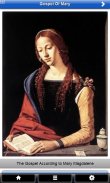
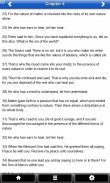
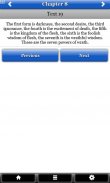
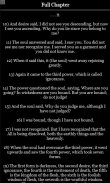
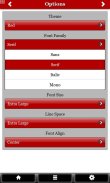
Gospel Of Mary Magdalene FREE

Description de Gospel Of Mary Magdalene FREE
The Gospel of Mary is found in the Berlin Gnostic Codex (or Papyrus Berolinensis 8502, as this ancient collection of Gnostic texts is labeled for archival reasons). This very important and well-preserved codex was apparently discovered in the late-nineteenth century somewhere near Akhmim in upper Egypt. It was purchased in 1896 by a German scholar, Dr. Carl Reinhardt, in Cairo and then taken to Berlin.
The book (or "codex", as these ancient books are called) was probably copied and bound in the late fourth or early fifth century. It contains Coptic translations of three very important early Christian Gnostic texts: the Gospel of Mary, the Apocryphon of John, and the Sophia of Jesus Christ. The texts themselves date to the second century and were originally authored in Greek. (In academic writing over the last century, this codex is variably and confusingly referenced by scholars as the "Berlin Gnostic Codex", the "Akhmim Codex", PB 8502, and BG 8502).
Despite the importance of the discovery of this ancient collection of Gnostic scriptures, several misfortunes including two world wars delayed its publication until 1955. By then the large Nag Hammadi collection of ancient Gnostic writings had also been recovered. It was found that copies of two of the texts in this codex -- the Apocryphon of John, and the Sophia of Jesus Christ -- had also been preserved in the Nag Hammadi collection. The texts from the Berlin Gnostic Codex were used to aid and augment translations of the Apocryphon of John and the Sophia of Jesus Christ as they now are published in Nag Hammadi Library.
But more importantly, the codex preserves the most complete surviving fragment of the Gospel of Mary (as the text is named in the manuscript, though it is clear this named Mary is the person we call Mary of Magdala). Two other small fragments of the Gospel of Mary from separate Greek editions were later unearthed in archaeological excavations at Oxyrhynchus in lower Egypt. (Fragments of the Gospel of Thomas were also found at this ancient site; see the Oxyrhynchus and Gospel of Thomas page for more information about Oxyrhynchus.) Finding three fragments of a text of this antiquity is extremely unusual, and it is thus evidenced that the Gospel of Mary was well distributed in early Christian times and existed in both an original Greek and a Coptic language translation.
Unfortunately the surviving manuscript of the Gospel of Mary is missing pages 1 to 6 and pages 11 to 14 -- pages that included sections of the text up to chapter 4, and portions of chapter 5 to 8. The extant text of the Gospel of Mary, as found in the Berlin Gnostic Codex, is presented below. The manuscript text begins on page 7, in the middle of a passage.
* Fullscreen mode.
* Full version of the Gospel of Mary in English translation.
* Easy and simple to use layout with page animations.
* Choose from a wide variety of customisable themes.
* Small lightweight size.
* Contains advertisements, see non-free version for no ads.
L'Évangile de Marie se trouve dans le Berlin gnostique du Codex (ou 8502 Berolinensis papyrus, comme cette ancienne collection de textes gnostiques est étiqueté pour des raisons d'archives). Ce codex très important et bien conservé, a apparemment été découvert à la fin du dix-neuvième quelque part près de Akhmim en Haute-Egypte siècle. Il a été acheté en 1896 par un chercheur allemand, le Dr Carl Reinhardt, au Caire, puis emmené à Berlin.
Le livre (ou «codex», comme ces livres anciens sont appelés) a probablement été copié et lié à la fin du quatrième ou au début du Ve siècle. Il contient des traductions de trois très importants premiers textes gnostiques coptes: l'Evangile de Marie, l'Apocryphe de Jean, et la Sagesse de Jésus-Christ. Les textes eux-mêmes datent du deuxième siècle et ont été initialement rédigés en grec. (Dans la littérature scientifique au cours du siècle dernier, ce codex est variable et confusion référencé par les spécialistes comme le «Berlin gnostique du Codex", la "Akhmim Codex", PB 8502, et BG 8502).
Malgré l'importance de la découverte de cette ancienne collection d'écritures gnostiques, plusieurs malheurs dont deux guerres mondiales retardé sa publication jusqu'en 1955. D'ici là, le Nag Hammadi grande collection d'anciens écrits gnostiques avait également été retrouvé. Il a été constaté que des copies de deux des textes de ce codex - L'Apocryphe de Jean, et la Sagesse de Jésus-Christ - ont également été conservés dans la collection de Nag Hammadi. Les textes de la Berlin gnostique du Codex ont été utilisés pour faciliter et augmenter les traductions de l'Apocryphe de Jean et la Sagesse de Jésus-Christ comme ils sont maintenant publiés à Nag Hammadi Library.
Mais plus important encore, le codex préserve le fragment préservé le plus complet de l'Evangile de Marie (que le texte est nommé dans le manuscrit, mais il est clair que ce nom de Marie est la personne que nous appelons Marie de Magdala). Deux autres petits fragments de l'Évangile de Marie de deux éditions distinctes grecques ont ensuite été retrouvés lors des fouilles archéologiques de Oxyrhynque en Basse-Egypte. (Fragments de l'Evangile de Thomas ont également été trouvés à cet ancien site;. Voir la Oxyrhynque et l'Evangile de Thomas page pour plus d'informations sur Oxyrhynque) Trouver trois fragments d'un texte de cette antiquité est extrêmement rare, et il est ainsi mis en évidence que l' Évangile de Marie a été bien répartie dans les premiers temps chrétiens et existait dans les deux un original grec et une traduction en langue copte.
Malheureusement, le manuscrit survivant de l'Evangile de Marie il manque des pages 1 à 6 et les pages 11 à 14 pages - qui comprenaient des sections du texte jusqu'à chapitre 4, et des parties du chapitre 5 à 8. Le texte existant de l'Evangile de Marie, que l'on trouve dans le Berlin gnostique du Codex, est présenté ci-dessous. Le texte du manuscrit commence à la page 7, au milieu d'un passage.
* Le mode plein écran.
* La version complète de l'Evangile de Marie dans sa traduction anglaise.
* Facile et simple à utiliser mise en page avec la page animations.
* Choisissez parmi une grande variété de thèmes personnalisables.
* De petite taille légère.
* Contient des annonces, voir la version non-libre pour aucune annonce.

























